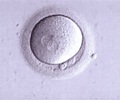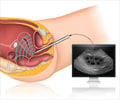Expecting parents can soon get high-definition baby pictures thanks to a new hyper-lens, which also provides ship captains incredibly accurate maps of the sea floor.
With the new discovery, high-resolution ultrasounds and sonar imaging has now become a possibility."The images you get when you try to look at unborn babies [with an ultrasound] are pretty fuzzy. You can see an arm, but you can't clearly see facial structures," ABC Science quoted author Dr Xiang Zhang of the University of California, Berkeley in the US, as saying.
"With this new technology, we will be able to resolve a baby's face before it's born," he added.
The brass hyperlens is made of 36 fins, spread out in a half circle like a handheld fan.
Each fin, roughly 20 centimetres long, compresses and magnifies incoming sound waves, which makes it easier to tease out the image of a tiny nose or the line of a check bone from an ultrasound.
While Zhang made his hyperlens from brass for easier production, it can also be produced from many other more durable materials, including steel.
Advertisement
A hyperlens is part of a larger group of materials known as metamaterials, which unlike normal materials, derive their physical properties from their physical structure instead of their chemical components.
Advertisement
But, metamaterials can now manipulate an entirely different kind of wave- sound waves.
Unlike an electromagnetic wave, which doesn't need a medium to propagate through, sound waves need some physical material such as air or water.
"These are really different phenomena. But the equations that govern both their actions are very similar," said Viktor Podolskiy, a physics professor at Oregon State University studying metamaterials.
This new metamaterial is the first acoustic hyperlens Podolskiy has heard of. Scaling up its production for commercial use instead of laboratory experiments will likely take years, he said.
The study has been published in the latest edition of Nature Materials.
Source-ANI
RAS














